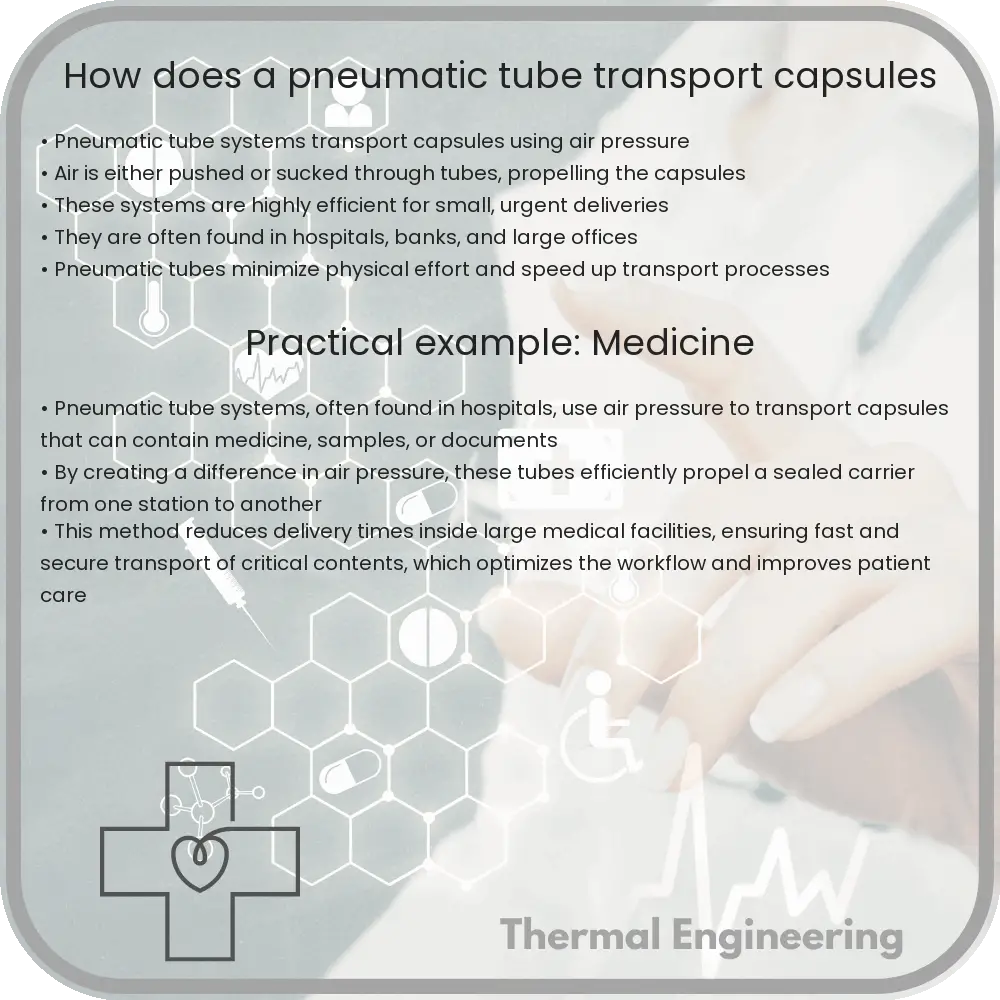Learn how pneumatic tube transport systems use air pressure and fluid dynamics to efficiently move capsules in a network of tubes for various applications.

Understanding Pneumatic Tube Transport Systems
Pneumatic tube transport systems seem like something out of a science fiction novel, but they have been around since the 19th century. These systems use air pressure differences to propel cylindrical containers, known as capsules, through a network of tubes. The basic principles behind pneumatic tubes are similar to those of everyday items such as vacuum cleaners or blowers. Let’s dive into how these fascinating systems work and examine their engineering principles.
Components of a Pneumatic Tube System
The primary components of a pneumatic tube system include:
- Capsules: Containers that hold items for transport.
- Tubes: Network of sealed tubes connecting sending and receiving stations.
- Blower: Generates air pressure to move the capsules.
- Stations: Points where items are sent and received.
- Switches: Direct the capsules to their designated destination.
How It Works
The operation of a pneumatic tube system is straightforward yet ingeniously applied:
- Insertion: A user places the items into a capsule and inserts it into the station.
- Creation of Air Pressure Difference: At the sending station, the system seals the tube and a blower either creates a vacuum (negative pressure) behind the capsule or high pressure in front of it.
- Movement of Capsule: The pressure difference across the capsule propels it through the tube towards the destination. Capsules can travel at speeds up to 25 miles per hour (mph), depending on the system design and distance.
- Routing: Switches in the network route the capsule to the intended receiving station.
- Arrival and Retrieval: Upon reaching its destination, air brakes slow down the capsule, and it is either automatically or manually retrieved from the tube.
Physical Principles Involved
The primary physical principles behind pneumatic tubes involve air pressure, fluid dynamics, and Bernoulli’s principle:
- Air Pressure: Air pressure is used to create a force on the capsules. When the pressure behind a capsule is higher than in front, the air molecules push the capsule forward. Conversely, if the pressure is lower behind the capsule than in front, it moves towards the lower pressure area.
- Bernoulli’s Principle: This principle explains that in fluid dynamics, an increase in the speed of the fluid occurs simultaneously with a decrease in pressure or potential energy. In pneumatic tubes, the air acting as the fluid can accelerate the capsules while the air pressure varies.
Applications and Uses
Pneumatic tube systems are not just relics; they are used in various modern applications including:
- Hospitals: For quick delivery of samples, medications, and documents across different departments.
- Banks: At drive-thru banks to transport money and documents between customers and tellers.
- Retail: In large stores, to move cash from registers to a central secure location.
- Industrial Settings: To send parts or tools within a manufacturing facility.
Pneumatic tube transport systems are a fascinating example of how fundamental physics principles can be harnessed to solve practical problems in innovative ways. By understanding these systems, we get a glimpse into the potential future of transportation and automated delivery systems.